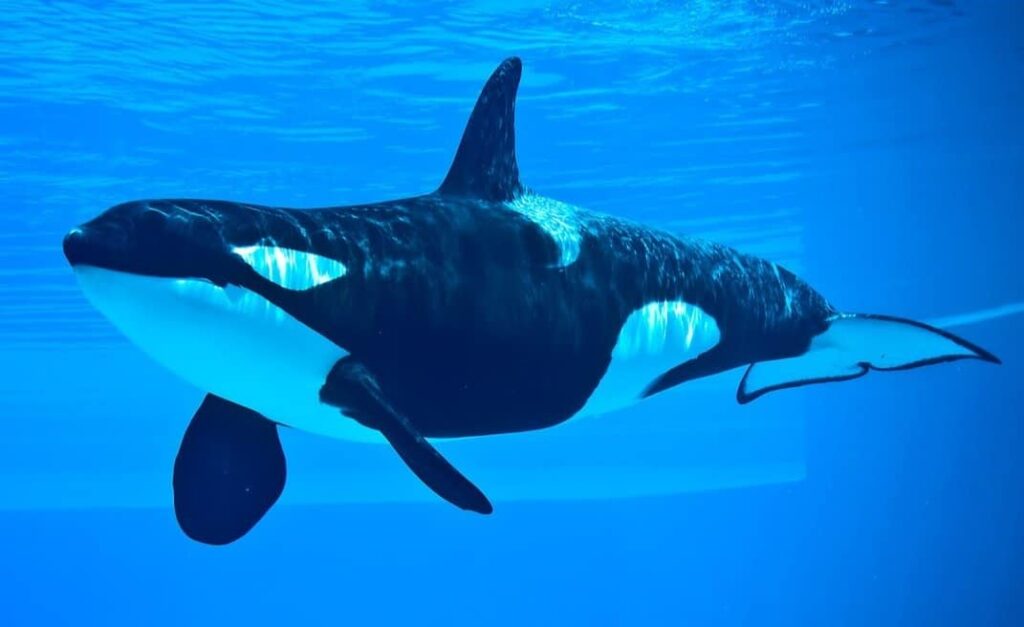Diving with killer whales

Killer whales are the largest members of the dolphin family. There are two types of killer whales: transient and resident. The resident killer whales live in groups called pods, which can be up to 100 individuals. Transient orcas travel alone or with small groups, but they often follow the same route every year as they hunt for food. Scientists have learned more about orcas by breeding them in captivity than they could ever learn by observing them in their natural habitat. Let’s explore more about diving with killer whales:
Killer whale Types
There are two types of orcas: transient and resident. Both types eat fish, but the difference is that transient orcas hunt marine mammals while resident orcas do not.
Transient Orcas live in small groups known as pods, which can number from 3 to 30 animals. They tend to move around a lot and hunt for prey such as seals and sea lions on land or sea ice. Resident Orcas are larger than transients at 20-29 feet long (6-8 meters), but they generally travel with their family groups within certain regions known as “home ranges.” Resident Orcas usually feed on salmon during summer months but may also eat other fish species depending on where they live (Pacific Northwest vs Alaska).
Do killer whales attack scuba divers?
Killer whales are not aggressive towards humans, and there are no known instances of them attacking scuba divers. However, they can be very curious and may approach divers without warning. They will often come close to investigate what you’re doing in the water, but that doesn’t mean they’re going to hurt you!
If they approach you while diving, just stay calm and don’t make any sudden movements the best thing for both parties is if everyone stays safe and sound.
What do they eat
Killer whales are carnivores that eat fish, seals, sea lions and even dolphins. They also have been known to eat sharks and rays. In one case a group was spotted attacking a large male sperm whale off the coast of Patagonia in Argentina. The attack lasted for several hours before both animals died from their injuries.
Killer whales dive
Killer whales have been known to dive up to a mile deep, staying underwater for up to an hour. They use echolocation to find their prey, which they can eat in one bite. Their nostrils are located on the top of their head, so they don’t have to come up for air during these long dives.
The orcas live in pods and hunt together
A pod is a group of killer whales that travel together and are led by the oldest female in the pod. They communicate with each other through vocalizations and body language, which can be seen from far distances underwater when they are hunting or playing.
What are they known for?
- They have been known to travel thousands of miles in a year.
- They can swim at speeds of up to 30 miles per hour and dive down to 1,000 feet deep.
- Killer whales live in pods (groups) that typically consist of 50-100 individuals and some pods may even be bigger than that!
Studies & Research
Orcas have been studied in the wild and captivity for decades, but many scientists are critical of orca breeding programs.
Scientists have learned more about orcas by studying them in captivity than they have by observing them in their natural habitat. This is because there are only so many killer whales that can be kept at any one time, and most whales are held in small tanks that don’t allow them much space or freedom of movement.
They live in pods, or family groups. These pods can be as small as 2 or 3 individuals or up to hundreds of members. Killer whales are very social animals, but they don’t have the same family structure as we do.
Killer whales have a complex language that they use to communicate with each other and humans have been able to teach some of them certain words in English (and vice versa). It is believed that there are 11 different dialects used by orcas around the world, but only six of these have been studied so far. This means it’s possible for two different types of orcas living in different areas not only to understand each other but also speak different languages!
Conclusion
We have learned a lot about orcas since they were first discovered in the 18th century. They are a very social species, but they don’t have the same family structure as we do. Orca pods live together and hunt together as a group, but each individual whale has its own personality that shapes how it interacts with others. There are two types of killer whales: those who eat fish and those who eat other mammals like seals or sea lions. Orcas can dive up to one mile deep and travel thousands of miles every day! Scientists have learned more about orcas by breeding them in captivity than ever before thanks to these amazing animals’ intelligence and adaptability
